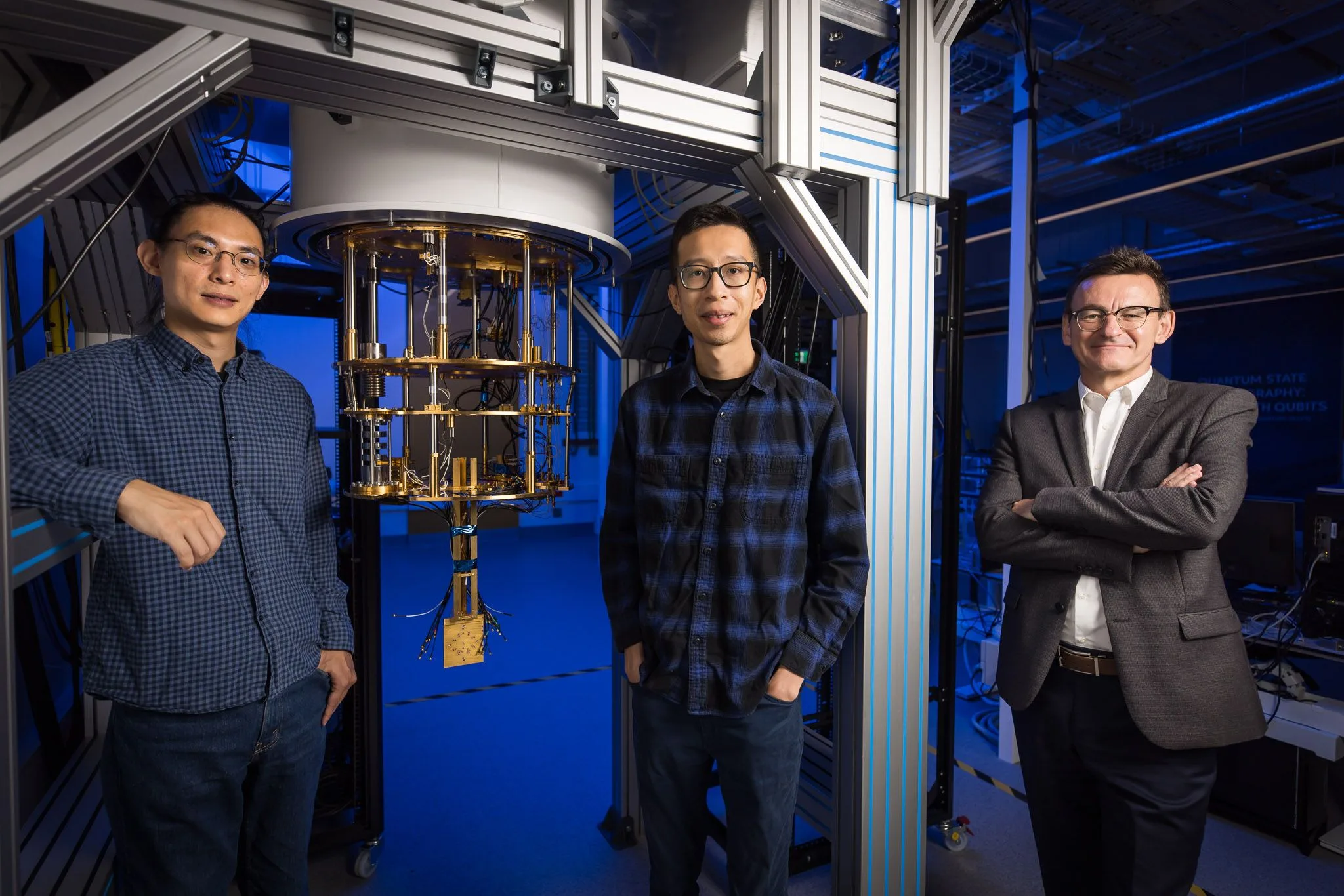Diraq, a quantum computing company, has made a significant breakthrough in quantum processor technology, allowing their processors to operate at temperatures over ten times hotter than possible. This development, led by Dr. Henry Yang and Jonathan Huang, increases the speed, cost-effectiveness, and environmental sustainability of Diraq’s quantum computers.
The processors use semiconductor spins compatible with existing silicon chip manufacturing and can operate above one kelvin. This advancement overcomes previous qubit control, initialization, and readout challenges at elevated temperatures, bringing semiconductor spin qubits into the realm of fault tolerance.
Quantum Computing: Overcoming the Heat Barrier
Quantum computing, with its potential to revolutionize various sectors such as materials science, medicine and pharmaceuticals, and banking and finance, has been grappling with significant challenges in its development. One of the most formidable obstacles has been heat. However, a recent breakthrough by Diraq, as published in the esteemed Nature journal, has demonstrated that their spin-based quantum processors can operate at temperatures more than ten times higher than previously possible while maintaining stability and high accuracy. This advancement allows Diraq quantum computers to be faster, more cost-effective, and more environmentally sustainable.
Semiconductor spins are widely recognized as one of the most scalable technologies for quantum processors due to their compact size and compatibility with existing silicon chip manufacturing. Crucially, they can operate above one kelvin (1 K), as discovered in two inaugural studies in 2020 – one led by Dr. Henry Yang, Head of Quantum Control at Diraq, and another at TU Delft.
The Challenges of Elevated Temperatures
While promising, the earlier studies noted that there were only limited fidelities for qubit control, initialization, and readout at elevated temperatures. This represented a set of fundamental challenges. Firstly, there was no natural means to set the qubits to a certain initial state because the spins are easily excited by the much greater thermal energy above one kelvin. As a result, the spin coherence times are shorter, being more prone to erroneous changes in their polarization and phase, which increases qubit error rates.
Furthermore, qubit readout fidelity was degraded due to the charge sensors becoming less sensitive at elevated temperatures. These obstacles appeared to make the prospect of fault-tolerance at elevated temperatures unlikely, or highly challenging at best.
Diraq’s Breakthrough: High-Fidelity Spin Qubit Operation
In a new work led by Jonathan Huang, Research Associate at Diraq and PhD student at UNSW, Sydney, several important advances were made in addressing these formidable challenges. Firstly, they demonstrated deterministic initialization of a pair of qubits from a fully thermalized state, fulfilling an important prerequisite for all quantum applications at elevated temperatures. Secondly, backed by state-of-the-art readout techniques, they achieved the highest-ever qubit initialization and readout fidelities above one kelvin. Thirdly, they benchmarked the qubits and measured the most accurate universal quantum logic in semiconductor spin qubits at this temperature, and additionally presented a full analysis of the errors in the logic gates.
The Entropy Transfer Engine: A Game Changer
This campaign dated back to shortly after Dr. Yang’s work in 2020, when an idea to initialize a pure two-qubit state was formulated by Mr. Huang, Dr. Yang and Dr. Andre Saraiva, Head of Solid-State Theory at Diraq. In this new concept, they employ an entropy transfer engine, once described as “a being who can play a game of skill with the molecules” by Maxwell, to cool the qubits to their lowest-energy state. Specifically, they devised an algorithm that manipulates and filters the two-qubit state, allowing only the target state to pass.
On the experimental front, this was realized using two-qubit logic gates and high-fidelity radio-frequency readout, together with hardware with fast real-time logic. As a result, in less than 200 microseconds, they were able to initialize and read out the qubits with fidelities up to 99.34 per cent above one kelvin, reducing the errors by an order of magnitude compared with previous results.
Towards Fault Tolerance: High Fidelity Qubit Control
With the qubits well-initialized, they mapped out the relaxation, excitation, and decoherence of qubits at different temperatures and magnetic fields. They tailored the qubit control strategies accordingly to achieve the highest to-date single-qubit gate fidelity of 99.85 percent and the highest to-date two-qubit gate fidelity of 98.92 per cent at the technologically significant temperature of one kelvin. These advances now bring semiconductor spin qubits operating above one kelvin into the realm of fault tolerance.
To gain insight into the remaining qubit errors, they employed machine learning and Bayesian tomography to obtain a full diagnosis of qubit initialization, readout, and control at different temperatures, which will guide the development of future quantum error correction protocols. This engineering and scientific feat by Diraq reports not only a significant milestone in spin-based quantum computing, but also comprehensive information for future studies covering spin physics, quantum information, computer science, quantum thermodynamics, and nano-device engineering.
External Link: Click Here For More

